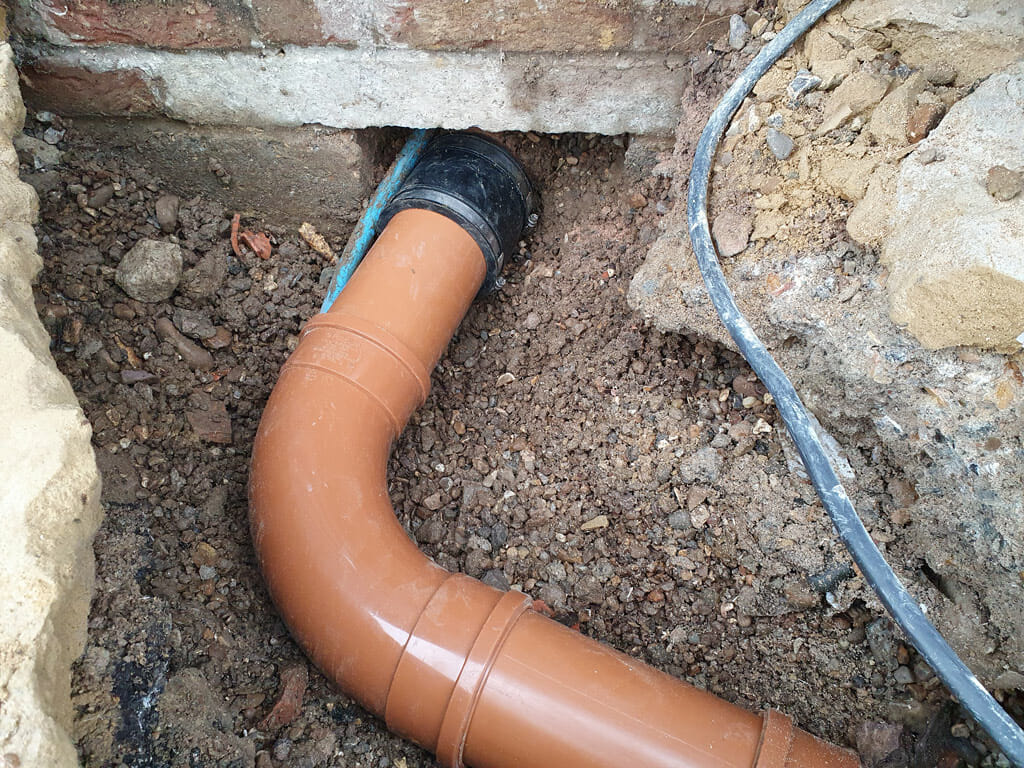
Blog
What is Foul Water Drainage? A Beginner’s Guide
If you’re a homeowner or business owner, understanding the basics of foul water drainage is crucial.
Foul water is the wastewater that comes from your bathroom, kitchen, and utility room. It is contaminated with pollutants that can be harmful to the environment and human health.
Foul water drainage is the system of pipework that carries this wastewater away from your property and into a private sewer system or a septic tank.
It’s important to keep foul water and surface water drainage separate to avoid contamination and pollution.
Surface water drainage is the system that carries rainwater away from your property, and it should never be mixed with foul water drainage.
If you’re connected to mains drainage, your foul water will eventually be transferred to a local sewage treatment plant for processing.
In this article, we’ll provide you with a comprehensive guide to foul water drainage. This includes what it is, how it works, and why it’s important. We’ll also discuss the building regulations for foul water drainage, how to keep your drainage system in good condition, and what to do if you suspect a problem with your foul water drainage.
Understanding Foul Water Drainage
Foul water drainage is a system that carries wastewater from different appliances and systems in your property that produce foul water.
These include toilets, sinks, showers, baths, washing machines, dryers, and dishwashers.
The purpose of foul water drainage is to remove wastewater from your property and transport it to a wastewater treatment plant or septic tank.
Foul water is typically contaminated with human waste, food waste, and other substances that can be harmful to human health and the environment.
Therefore, it is essential to properly manage foul water drainage to prevent pollution and protect public health.
Components and Materials
Foul water drainage systems consist of different components and materials that work together to transport wastewater from your property to a wastewater treatment plant or septic tank. These components include:
- Pipes: Foul water drainage pipes are typically made of PVC or cast iron and come in different sizes and lengths depending on the application. PVC pipes are lightweight, easy to install, and resistant to corrosion, while cast iron pipes are durable and long-lasting.
- Fittings: Foul water drainage fittings are used to connect pipes together and change the direction of the flow. These fittings include bends, couplings, tees, and reducers.
- Traps: Foul water drainage traps are used to prevent foul odours and gases from entering your property. These traps include P-traps, S-traps, and U-traps.
- Ventilation: Foul water drainage systems require ventilation to prevent the buildup of gases and maintain the proper flow of wastewater. Ventilation pipes are typically installed on the roof of your property and connected to the drainage system.

Design and Planning of Foul Water Drainage Systems
When designing and planning a foul water drainage system, it is important to consider the relevant regulations and standards.
In the UK, the Water Industry Act 1991 sets out the legal framework for the provision of water and sewerage services.
This includes the requirement for developers to obtain approval for their foul water drainage systems from the relevant water and sewerage company.
In addition, there are a number of technical standards and guidance documents that provide detailed advice on the design and construction of foul water drainage systems.
These include the Building Regulations Approved Document H, which sets out the requirements for foul water drainage in new buildings, and the Sewers for Adoption guidance, which provides detailed guidance on the design and construction of foul water drainage systems that are intended to be adopted by water and sewerage companies.
Design Considerations
When designing a foul water drainage system, there are a number of key considerations that should be taken into account. These include:
- Flow rates and volumes: The design of the system should take into account the expected flow rates and volumes of foul water that will be generated by the property or development.
This will help to ensure that the system is appropriately sized and can cope with the expected demand.
- Gravity vs pumped systems: Foul water drainage systems can be designed as either gravity-fed or pumped systems.
Gravity-fed systems rely on the natural slope of the land to transport wastewater to the sewer, while pumped systems use pumps to lift the wastewater to the sewer.
The choice of system will depend on a number of factors, including the topography of the site and the location of the sewer.
- Materials and construction: The materials and construction of the system should be chosen to ensure that it is durable, reliable and easy to maintain.
Common materials used for foul water drainage systems include PVC and cast iron.
- Access and maintenance: The system should be designed to allow for easy access and maintenance.
This may include the provision of access points for inspection and cleaning, and the use of removable covers for manholes and inspection chambers.
Installation of Foul Water Drainage
When it comes to installing foul water drainage, it is important to ensure that the work is carried out by a professional drainage company like Jonny’s Drains.
This will ensure that the installation is done correctly and to the required standards.
Preparation and Excavation
Before the installation can begin, the area where the foul water drainage is to be installed must be prepared.
This involves excavating the ground to the required depth and laying a bed of concrete or other suitable material to provide a stable base for the pipework.
It is important to ensure that the excavation is carried out correctly and to the required depth, as this will ensure that the pipework is properly supported and will not move or shift over time.
The depth of the excavation will depend on a number of factors, including the size and type of the pipework, the slope of the ground, and the location of any existing drainage systems.
Pipework and Connections
Once the preparation and excavation are complete, the pipework can be installed.
This involves laying the pipework in the correct position and making the necessary connections to any existing drainage systems.
It is important to ensure that the pipework is installed correctly and to the required standards, as this will ensure that the system is able to function properly and will not become blocked or overloaded over time.
The pipework should be laid with a suitable gradient or fall, to allow the foul water to flow freely towards the main drainage system.
In addition to the pipework itself, it is also important to ensure that the correct fittings and connections are used, to ensure that the system is watertight and will not leak over time.
This may include the use of seals, gaskets, or other fittings, depending on the type of pipework and the specific requirements of the installation.

Maintenance and Troubleshooting
To ensure that your foul water drainage system is functioning properly, it is important to perform routine checks.
You should regularly inspect the pipes and make sure that there are no blockages or leaks.
Check for any signs of water damage or dampness around the pipes, as this could indicate a problem.
Additionally, it is a good idea to inspect the drains and gullies outside your property to make sure they are clear of debris.
Common Issues and Solutions
If you notice any issues with your foul water drainage system, it is important to address them promptly to prevent further damage. Here are some common issues and their solutions:
- Blockages: Blockages can occur when items such as food waste, grease, and sanitary products are flushed down the toilet or poured down the sink.
To prevent blockages, avoid flushing anything other than toilet paper and bodily waste down the toilet, and dispose of food waste and grease in the bin.
If you do experience a blockage, you can try using a plunger or drain snake to clear it. If this does not work, you may need to call a professional plumber.
- Leaks: Leaks can occur when pipes become damaged or corroded.
If you notice any signs of a leak, such as dampness or water damage, you should call a professional plumber to repair the damaged pipe.
- Bad odours: Bad odours can be caused by a number of factors, including blockages, leaks, and poor ventilation.
To prevent bad odours, make sure that your drains and gullies are clear of debris, and ensure that your ventilation system is working properly.
If you continue to experience bad odours, you may need to call a professional plumber to investigate the issue.
Frequently Asked Questions
What purposes does foul water drainage serve in a property?
Foul water drainage is a crucial system in any property that carries away wastewater from the kitchen, bathroom, and utility room appliances.
This system helps to keep the property clean and hygienic by preventing wastewater from accumulating.
The foul water drainage system also helps to protect the environment by transporting wastewater to treatment facilities, where it can be treated before being discharged safely into the water system.
What are the key considerations when designing a foul water drainage system?
When designing a foul water drainage system, several factors need to be taken into account.
The first consideration is the number of appliances that will be connected to the system. The system must be designed to handle the expected volume of wastewater produced by these appliances.
The second consideration is the slope of the pipework, which must be sufficient to allow wastewater to flow freely towards the treatment plant.
The third consideration is the location of the treatment plant, which must be close enough to the property to allow for efficient transportation of wastewater.
How can I tell if my property is connected to the mains foul water drainage?
If your property is connected to the mains foul water drainage system, you will have two sets of pipes running from your property.
One set of pipes will be for foul water drainage, and the other set will be for surface water drainage.
The foul water drainage pipes will carry wastewater from your kitchen, bathroom, and utility room appliances.
You can check the location of the pipework by looking for manhole covers or inspection chambers in your garden or driveway.
What are the typical characteristics and colour indicators of foul drainage pipes?
Foul drainage pipes are typically made of PVC or ABS plastic and are usually coloured brown or black.
These pipes are designed to be strong, durable, and resistant to corrosion and chemicals. They are also designed to be watertight to prevent leaks and blockages.
The pipes are usually between 32mm and 110mm in diameter, depending on the expected volume of wastewater to be carried.
If you notice any foul smells or discolouration in your wastewater, it may be an indication of a problem with your foul water drainage system.
Request A Call Back Today
Let us call you when it's convenient for you. Request a callback and we will contact you as soon as possible to see what we can do for you.
Need a drain unblocking? No problem!
Many of my customers in Westerham, Kent report of blocked drains, be it toilet and sink blockages, blocked waste pipes or manholes. If you discover a blockage, don’t delay. I offer a 24 hour, 7 days a week service and can often unblock your drain within an hour. So if you have emergency drainage issues, contact Jonnys Drains straight away on 01959 928 853.